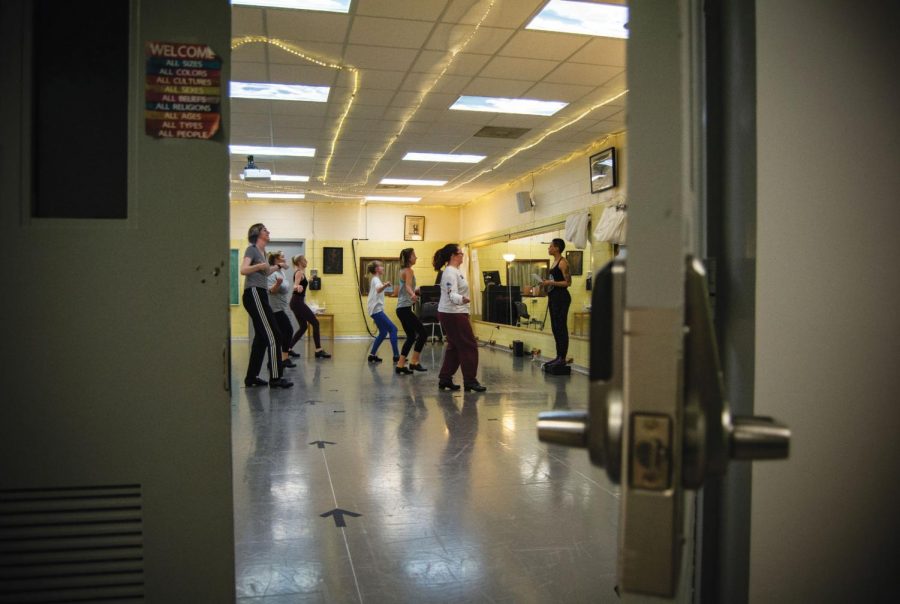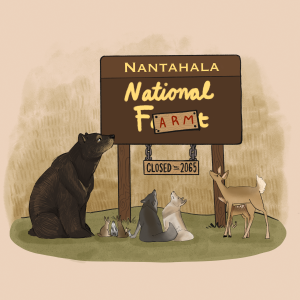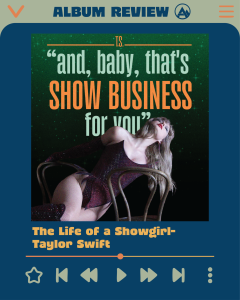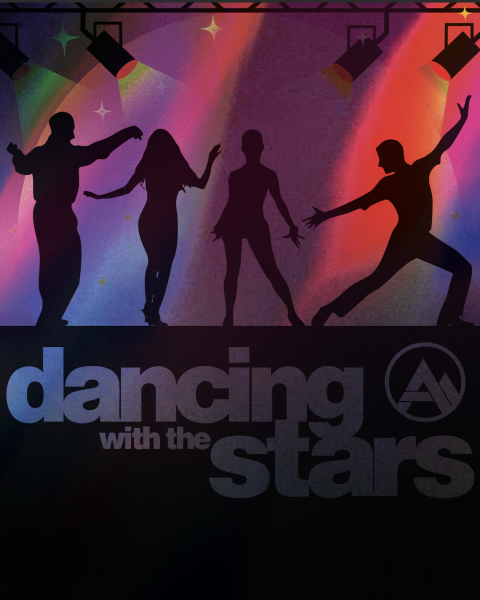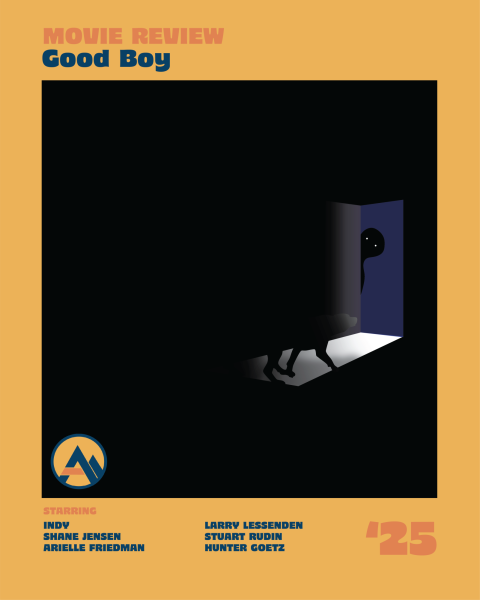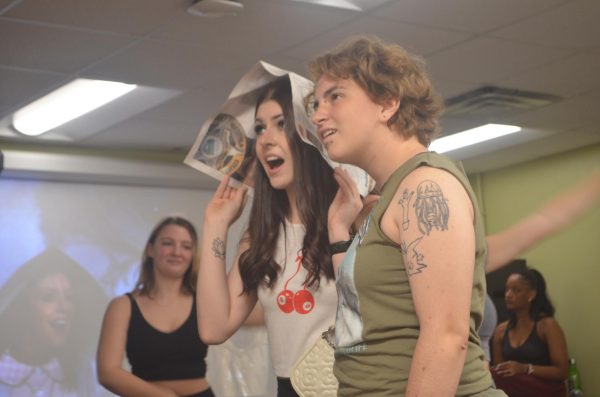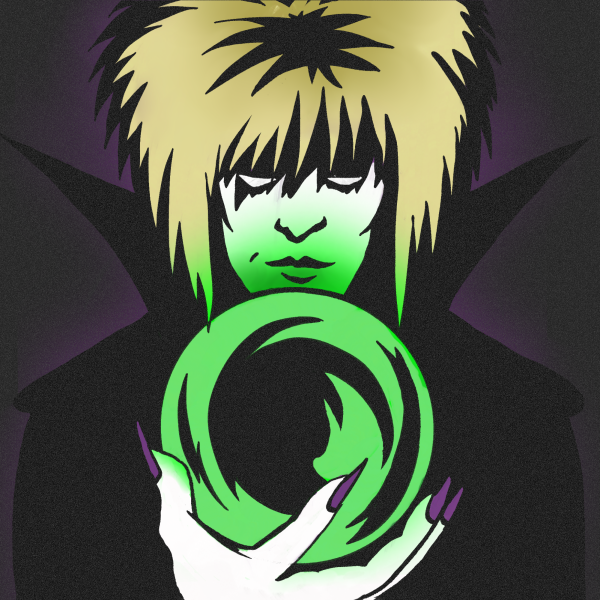Spring Appalachian Dance Ensemble brings tap dance back to the stage
Tap dancers of the Spring Appalachian Dance Essemble rehearse their own special rendition of the shim sham tap routine in preparation for an upcoming performance. The ensemble will begin performances starting March 20 at 7:00pm in the Valborg Theatre.
March 13, 2019
When Spring Appalachian Dance Ensemble opens March 20, seven tappers will treat the audience to a “special sauce.” The Department of Theatre and Dance puts on SADE, an eight-piece dance concert, each spring.
Assistant professor Cara Hagan created “(Shim Sham with the Special) SAUCE,” which tips a hat to 1930s and ‘40s jazz and the shim sham. The shim sham, which is regarded as the national anthem of tap dance, was often performed before the intermission and at the end of shows. During the shim sham, the dancers yelled “salt” and “peanuts” to entice the audience to buy concessions.
Hagan is incorporating this vocal element into her piece as well, which was challenging for the dancers at first. Sophomore dance studies major Brianna Graves said one day in rehearsal they tried to think of words to yell in the moment, but only sounds came out.
Hagan is choreographing the shim sham-inspired piece in collaboration with her seven dancers. Hagan created the framework for the routine, but gave them freedom to create their own material.
“They have done some compositional activities, where I’ve given them phrase work and said, ‘Here are the parameters, do something with it,’ and so it’s been a collaborative effort,” Hagan said.
Hagan said the dancers in this piece are seasoned tappers, but for some it has been awhile since they’ve laced up their Oxfords.
“It’s kind of been challenging because I haven’t tapped in four years… so I’m kind of in the process of relearning and picking it back up again,” sophomore psychology major Abigale Wiggins said.
Other dancers like Graves, who’s tapped since she was 2, had to adjust to a more rhythmic style.
“I grew up with studio tap, and this is much more true to authentic tap when it was created, so it’s been a little difficult to adjust to different rhythms,” Graves said.
Sophomore dance studies major Sophie Reynolds said she appreciates Hagan’s holistic approach to teaching tap.
“I think I’ve definitely gotten a lot more about culture and the background of tap in this piece, and I think it makes it more valuable to me,” Reynolds said.
During rehearsal, Hagan explained tap history to her dancers. The nobility and the upper class funded fine arts like ballet and modern dance, but tap started as a colloquial dance form. Hagan explained that tap came primarily from slaves and Irish immigrants.
“People who were not considered people for a long time in this country created this art form,” Hagan said.
Tap not only combines different cultures, but also is rooted in the history of jazz. Because tap was considered low-class, it was never taken as seriously as ballet or modern dance. Thus, tap was usually left out of dance curriculums. Hagan said that tap should be included in more dance conservatories because it’s one of few quintessentially American dance forms.
In the fall, Hagan teaches a tap history class through the lens of race, class and gender, and said although the class combines lecture and studio lessons, dance experience isn’t necessary.
“It doesn’t matter what level you’re at. If you’re willing to engage in material, you have a lot of fun,” Hagan said. “Humans are inherently rhythmic, so even those who say, ‘Well I don’t have any rhythm,’ you can tap dance too.”
Junior dance studies major Amanda Proffitt predicts that SADE will make the audience smile.
“It’s a really fun piece that any audience member can get on board with. It’s just a fun time,” Proffitt said.
SADE runs at the Valborg Theatre March 20-24. Student tickets cost $10. Tickets for SADE are on sale online and at the Schaefer Center for the Performing Arts box office.

